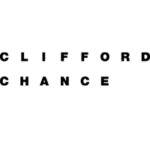-
What types of conduct and causes of action can be relied upon as the basis of a competition damages claim?
A competition damages claim may be founded on a range of anti-competitive conduct and corresponding causes of action. The principal types of conduct include:
- Agreements or concerted practices that prevent, restrict, or distort competition, in breach of Article 101 of the Treaty on the Functioning of the European Union (“Article 101 TFEU”) or the Chapter I prohibition in the Competition Act 1998 (“Chapter I Prohibition”). These are commonly referred to as “cartel cases” and may involve price-fixing, market sharing, bid-rigging, or other collusive arrangements between undertakings.
- Abuse of a dominant position, contrary to Article 102 TFEU or the Chapter II prohibition in the Competition Act 1998 (“Chapter II Prohibition”). This may include excessive pricing, exclusionary practices, or other forms of abusive unilateral conduct by a dominant undertaking.
The causes of action in such claims are typically for breach of statutory duty, as competition law infringements are vindicated as statutory torts under English law. To establish a claim, the claimant must show both (i) an infringement of competition law and (ii) actionable harm or damage caused by that infringement.
Actionable damage is broadly defined. In such cases, the claimant must prove, on the balance of probabilities, that the loss or damage occurred. The court adopts an “all or nothing” approach: either the event giving rise to damage happened, or it did not. If the evidence shows a balance in favour of it having happened, then it is proved that it did in fact happen.
-
What is required (e.g. in terms of procedural formalities and standard of pleading) in order to commence a competition damages claim?
A party commencing a competition damages claim must comply with specific procedural formalities and standards of pleading as set out in the Competition Appeal Tribunal Rules 2015 (“the Tribunal Rules”).
The claim form should state whether the claim is a follow-on claim (based on a prior infringement decision) or a stand-alone claim.
Its annexes should be prepared in a clear, concise, and logical manner. The names and contact details of the parties should be set out at the beginning. A brief summary of the factual and legal nature of the claim should follow, succeeded by a full account of the factual background and the alleged loss. Any calculations or supporting documents should be annexed to the claim form. Depending on the nature of the claim/allegations the claim form may be accompanied by expert economic evidence.
There is no express requirement in the Tribunal Rules or the Guide to Proceedings for pre-action correspondence before commencing a claim in the Tribunal.
-
What remedies are available to claimants in competition damages claims?
The primary remedy available to claimants in competition damages claims is an award of damages. The purpose of such damages is to place the claimant in the position they would have been in had the infringement of competition law not occurred. This is known as the compensatory principle, which is applied in both individual and collective actions, although it is subject to modification in collective proceedings where aggregate damages may be awarded and distributed on a fair and reasonable basis rather than strictly compensating each individual for their precise loss.
In addition to damages, a claimant may seek any other claim for a sum of money arising from the infringement or alleged infringement of competition law. Claimants may also seek interest on the sums awarded. The Tribunal has discretion to award simple or compound interest, and the rate and method of calculation will depend on the circumstances of the case.
A claimant may also apply for an injunction, which is an order requiring a party to do or refrain from doing a particular act. The Tribunal has jurisdiction to grant injunctions in proceedings arising in England and Wales or Northern Ireland, but not in relation to Scotland.
In appropriate cases, the Tribunal may grant interim measures, including interim injunctions, to preserve the position of the parties pending final determination of the claim. Although these types of remedy are less common, there has been a recent uptick on requests for interim relief particularly where in business-to-business claims involving alleged refusals of supply.
-
What is the measure of damages? To what extent is joint and several liability recognised in competition damages claims? Are there any exceptions (e.g. for leniency applicants)?
The measure of damages in competition law claims is governed by the compensatory principle, which requires that the claimant be placed, so far as possible, in the position they would have been in had the breach not occurred. This involves a counterfactual assessment, considering what would have happened in the absence of the infringement, and quantifying the loss accordingly. The assessment of damages often requires the application of a “broad axe” or “broad brush” to reflect the inherent uncertainties in quantification.
In collective proceedings, the compensatory principle has been described as being “radically modified”. When aggregate damages are awarded, the focus shifts from individual loss to ensuring that each class member receives fair and reasonable compensation.
Joint and several liability is recognised in competition damages claims by the Tribunal/UK courts. This means that each participant in the infringement can be held liable for the entire harm caused, allowing claimants to recover the full amount of damages from any one or more of the infringing parties.
-
What are the relevant limitation periods for competition damages claims? How can they be suspended or interrupted?
The limitation period for competition damages claims in the United Kingdom depends on the jurisdiction in which the claim is brought. For claims arising in England and Wales, the relevant limitation period is six years from the date on which the cause of action accrued, as provided by the Limitation Act 1980 (“LA 1980”). In Northern Ireland, a similar six-year period applies. In Scotland, the limitation period is generally five years, governed by the Prescription and Limitation (Scotland) Act 1973. These rules apply to claims made under section 47A of the Competition Act 1998 (“CA 1998”) and to collective proceedings under section 47B of the CA 1998.
For claims that arose before 1 October 2015, the limitation periods set out in Rule 31(1) to (3) of the Competition Appeal Tribunal Rules 2003 (“2003 Rules”) continue to apply. These claims are not subject to the limitation rules introduced by section 47E of the CA 1998, which applies only to claims arising on or after 1 October 2015. The 2003 Rules provide that the permission of the Tribunal is required for a follow-on claim to be made before the end of the period specified in section 47A(7) or (8) of the CA 1998 as it was prior to the amendments made by the Consumer Rights Act 2015.
The cause of action in competition damages claims generally accrues when the claimant has knowledge of the facts necessary to bring a claim for damages arising from an infringement of competition law. For competition damages claims, the relevant facts are those without which the cause of action is incomplete. These include facts that would justify embarking on the preliminaries to starting a claim, such as taking advice and collecting evidence. Facts that merely improve the prospects of success or relate to a possible defence are not considered relevant for this purpose.
Claims made outside the applicable limitation period are “time barred” and cannot proceed.
The limitation period may be suspended or interrupted in certain circumstances. For example, section 32 of the Limitation Act 1980 provides for postponement of the limitation period in cases of deliberate concealment, fraud, or mistake. The recent decision in Merchant Umbrella proceedings, following the Court of Appeal decision in Arcadia, has confirmed that the application of domestic limitation rules comply with the EU principle of effectiveness, and that the limitation period for a competition law infringement does not necessarily start only when the infringement comes to an end. Instead, the period may begin when the claimant is able to bring a claim, subject to any statutory postponement provisions such as those in section 32 LA 1980.
-
Which local courts and/or tribunals deal with competition damages claims?
The principal legal body with jurisdiction for competition damages claims in the United Kingdom is the Competition Appeal Tribunal (the “CAT or Tribunal”). The CAT is empowered to hear claims for damages or other sums of money brought by claimants who have suffered loss or damage as a result of an infringement of the relevant prohibitions contained in the Treaty on the Functioning of the European Union (“TFEU”) or the Competition Act 1998 (“CA 1998”). These claims may be brought as either follow-on actions, based on a prior infringement decision by a competition authority, or as stand-alone actions, where the claimant must establish the infringement.
The CAT also has jurisdiction to grant injunctions in proceedings under section 47A of the CA 1998, provided that such a claim could be made in proceedings in England and Wales or Northern Ireland. The CAT does not have jurisdiction to grant injunctions in relation to Scotland.
In addition to the CAT, the High Court in England and Wales, the Court of Session in Scotland, and the High Court in Northern Ireland retain jurisdiction to hear competition damages claims, particularly where the claim could be brought as a civil action in those courts. However, the CAT is the specialist tribunal for such claims, especially in the context of collective proceedings and collective settlements.
-
How does the court determine whether it has jurisdiction over a competition damages claim?
In determining whether it has jurisdiction, the court/Tribunal will also consider the proper forum for the claim. The burden is on the claimant to show that England and Wales is the appropriate forum for the trial of the action, and that this is clearly so. The court will look at factors indicating whether justice can be done in another forum at substantially less inconvenience or expense, including the location of the parties, the place where the events occurred, where the damage has occurred and the availability of evidence. The court will not be deterred from granting a stay or refusing permission to serve out simply because the claimant will be deprived of a legitimate advantage, unless there is a risk that substantial justice will not be done in the alternative forum.
However, the court/Tribunal recognises that in the context of cartel cases, the geographical location where the collusion takes place does not necessarily define the natural or appropriate forum. In the context of international business, collusion might take place in a number of different locations and simply because evidence may need to be translated or witnesses require interpretation, will not be enough to persuade the Tribunal that it does not have appropriate jurisdiction.
-
How does the court determine what law will apply to the competition damages claim?
See response to question 1 and question 4.
-
What is the applicable standard of proof?
See response to question 1 and question 4.
-
To what extent are local courts bound by the infringement decisions of (domestic or foreign) competition authorities?
The Tribunal is expressly bound by infringement decisions of the European Commission where appeals against those decisions have been dismissed. Section 58A of the Competition Act 1998 (“CA 1998”) provides that such decisions are binding on the Tribunal, and this has been affirmed in the context of follow-on collective proceedings, such as those brought in Merricks v Mastercard. Once the appeals before the European Courts against the Commission’s decision have been dismissed, the decision is binding on the Tribunal, and the infringement cannot be re-litigated in the CAT.
The binding effect of foreign competition authority decisions is more limited.
-
To what extent can a private damages action proceed while related public enforcement action is pending? Is there a procedure permitting enforcers to stay a private action while the public enforcement action is pending?
A private damages action may proceed concurrently with related public enforcement action. The CAT Rules and the Tribunal Guide do not impose an automatic stay of private proceedings solely because a public enforcement action is pending.
However, the Tribunal possesses broad case management powers, including the power to stay proceedings where appropriate. The Tribunal may consider whether it is just and proportionate to stay a private action pending the outcome of a related public enforcement action, taking into account the interests of justice, the efficient conduct of proceedings, and the avoidance of inconsistent judgments. There is no express procedure permitting public enforcers to require a stay of private actions, but the Tribunal may, on application by a party or of its own motion, order a stay if it considers this necessary to ensure the fair and efficient resolution of the case.
-
What, if any, mechanisms are available to aggregate competition damages claims (e.g. class actions, assignment/claims vehicles, or consolidation of claims through case management)? What, if any, threshold criteria have to be met?
The principal mechanism is the collective proceedings regime introduced by the Consumer Rights Act 2015, which amended the Competition Act 1998 (“CA 1998”) to allow for collective actions before the CAT on either an opt-in or opt-out basis. This regime enables a single class representative to bring claims on behalf of an identifiable class of persons, with the possibility of awarding damages on an aggregate basis, rather than requiring individual assessment of each class member’s loss.
In addition to collective proceedings, claims may be aggregated through assignment to a claims vehicle or by consolidation and case management directions, although the collective proceedings regime is the most significant innovation in UK law for mass redress in competition cases.
The threshold criteria for certification of collective proceedings are set out in section 47B(6) of the CA98 and Rule 79 of the Tribunal Rules 2015. The CAT must be satisfied that:
- The claims are brought on behalf of an identifiable class of persons.
- The claims raise common issues of fact or law.
- The claims are suitable to be brought in collective proceedings
As part of its suitability assessment, the CAT will apply the Pro-Sys Test, which requires that the class representative put forward a methodology that offers a “realistic prospect of establishing loss on a class-wide basis,” such that, if the alleged overcharge or harm is established at trial, there is a means to demonstrate that it is common to the class. The methodology must not be “purely theoretical or hypothetical,” but must be grounded in the facts of the particular case, with some evidence of the availability of the data to which the methodology is to be applied.
The Pro-Sys Test acts as a “blueprint” for trial, identifying the issues to be resolved and providing material from which the CAT can determine whether the issues are “common” and “suitable” for certification. It is not necessary for the methodology to be definitive or to address every conceivable issue or defence; rather, it must be workable, plausible, and capable of being refined as the case progresses, particularly after disclosure.
-
Are there any defences (e.g. pass on) which are unique to competition damages cases? Which party bears the burden of proof?
The pass-on defence is frequently invoked in competition claims. This defence arises where a defendant alleges that the claimant has not suffered loss because the unlawful overcharge or harm has been passed on to the claimant’s own customers, rather than being absorbed by the claimant itself. The pass-on defence is not a general feature of all civil damages claims but is specifically recognised in competition law to avoid double recovery and to ensure that only those who have actually suffered loss are compensated.
The burden of proof in relation to the pass-on defence lies with the defendant. The defendant must demonstrate, on the balance of probabilities, that there exists another class of claimant downstream to whom the overcharge has been passed on. Unless the defendant discharges this burden, the claimant’s recovery should not be reduced or defeated on this ground.
Once the defendant has raised the issue of pass-on, there may be a “heavy evidential burden” on the claimant to provide evidence of how it has dealt with the recovery of costs within its business, as much of the relevant information will be in the claimant’s possession. If the claimant does not produce this evidence, adverse inferences may be drawn by the court.
The pass-on defence is treated as an element in the quantification of damages rather than a strict defence to liability. Its purpose is to ensure that damages reflect the actual loss suffered and to prevent over- or under-compensation between different levels of the supply chain. The normal rule of compensatory damages applies, and the court may use estimation and the “broad axe” approach to assess the extent of pass-on where precise quantification is not possible.
-
Is expert evidence permitted in competition litigation, and, if so, how is it used? Is the expert appointed by the court or the parties and what duties do they owe?
Expert evidence is permitted and frequently used in competition litigation. Experts are typically appointed by the parties rather than by the court. Their primary role is to provide specialised knowledge, often in economics or industry practice, to assist the CAT in understanding complex issues such as the quantification of damages, the assessment of overcharge, the evaluation of relevant market and the effects of the anticompetitive conduct.
Experts are subject to the same duties to the court as in other civil litigation. They are required to provide independent, unbiased assistance to the Tribunal on matters within their expertise, regardless of the party by whom they are instructed. The CAT expects experts to comply with these duties, and their evidence is scrutinised for impartiality and reliability.
The Tribunal may also actively manage the process of expert evidence, including limiting the number of reports, requiring joint statements, or holding “hot tub” sessions where experts are questioned together by the Tribunal.
-
Describe the trial process. Who is the decision-maker at trial? How is evidence dealt with? Is it written or oral, and what are the rules on cross-examination?
The CAT is the decision maker at trial. The Tribunal is typically composed of a panel including a legally qualified Chair and other members with relevant expertise, usually including a competition economist.
Parties are required to submit pleadings, witness statements, and expert reports in writing prior to the hearing
Evidence at trial is dealt with through a combination of written and oral formats. Evidence at trial is managed under the Tribunal’s broad case management powers. The Tribunal may give directions as to the evidence required, the manner in which it is to be presented, and the extent to which it must be oral or written. The Tribunal has a wide discretion to admit or exclude evidence, taking into account whether it would be just and proportionate to do so, and considering factors such as the relevance, necessity, and potential prejudice to the parties.
During the trial, oral evidence may be given by witnesses and experts, who can be questioned by the Tribunal and, where appropriate, cross-examined by opposing counsel. Cross-examination is permitted where necessary to resolve essential evidential issues. The Tribunal expects parties to give reasonable notice if they intend to contest the evidence of a witness put forward by another party. If a witness whose evidence is contested is not called for cross-examination, the Tribunal will determine what weight, if any, should be given to that evidence, taking into account the reasons for the witness’s unavailability.
The Tribunal may also employ procedures such as “hot tubs,” where experts from both sides are questioned concurrently by the Tribunal, with limited further questions from counsel.
-
How long does it typically take from commencing proceedings to get to trial? Is there an appeal process? How many levels of appeal are possible?
The typical duration from the commencement of proceedings to trial before the CAT varies according to the complexity of the case.
Due to the complexity and scale of competition litigation the CAT has adopted a flexible approach to case management, including the use of split trials to address issues of liability, causation, and quantum separately. This approach is particularly important in cases involving multiple claims arising from the same alleged infringement, where consistency of outcome is essential to uphold the rule of law.
The UK also has a “fast-track” procedure. Private claims assigned to the fast-track procedure are expected to be completed within six months of designation. However, it is recognised that many private actions may take longer to reach a main hearing, particularly where extensive disclosure is required or the issues are complex. By way of example, collective proceedings applications filed in 2020/2021 are now making their way through to substantive trial, with one Justin Le Patourel v BT, filed in 2021 now awaiting a decision as to permission to appeal.
Appeals are possible to the Court of Appeal and, with permission, to the Supreme Court.
-
Do leniency recipients receive any benefit in the damages litigation context?
Leniency recipients do not receive any automatic benefit in the context of damages litigation. The fact that a company has received leniency in the administrative proceedings does not, in itself, provide a defence or reduction of liability in subsequent private damages actions. See 22 below for interplay with confidential information.
-
How does the court approach the assessment of loss in competition damages cases? Are “umbrella effects” recognised? Is any particular economic methodology favoured by the court?
The court approaches the assessment of loss in competition damages cases by seeking to restore the claimant or class to the position they would have been in had the infringement not occurred. This process often involves complex economic, econometric, and statistical evidence, and the court is permitted to use estimation and informed guesswork where precise quantification is not possible. The court wields what is termed the “broad axe”—that is, it may fill evidential gaps and make reasonable approximations, especially when dealing with hypothetical or counterfactual scenarios. The principle is that, once a claimant demonstrates a triable issue of more than nominal loss, the court is obliged to quantify that loss as best it can, even if the evidence is exiguous or imprecise.
The court recognises “umbrella effects”. However, the identification and quantification of umbrella effects are acknowledged as challenging. The court accepts that loss may be transmitted through the market in complex ways, and methodologies may need to account for these indirect effects.
No single economic methodology is favoured by the court. The choice of methodology is case-specific and depends on the available evidence and the nature of the alleged abuse. The court accepts a range of approaches, including regression analysis, comparator-based methods, and counterfactual modelling. In the context of collective proceedings, the methodology must be credible or plausible and offer a realistic prospect of establishing loss on a class-wide basis.
-
How is interest calculated in competition damages cases?
The Tribunal or court has discretion to award interest on damages and may include interest on all or any part of the damages awarded, for all or any part of the period between the date when the cause of action arose and the date of payment or the date of the decision.
The Tribunal may award either simple or compound interest. While simple interest has traditionally been awarded, there is judicial recognition that compound interest may better reflect economic reality, particularly in commercial cases. The choice between simple and compound interest will depend on the evidence and the circumstances of the case.
-
Can a defendant seek contribution or indemnity from other defendants? On what basis is liability allocated between defendants?
A defendant may seek contribution or indemnity from other defendants by making an additional claim within the proceedings. An additional claim is defined as a claim by a defendant against another party, including for contribution or indemnity, and is treated as if it were a claim for the purpose of the CAT Rules.
Such a claim may be made without the Tribunal’s permission if it is filed with the defence, or, in the case of a claim for contribution or indemnity against an existing party, within 28 days after that party files its defence. At any other time, the permission of the Tribunal is required.
In cases of joint and several liability, such as those involving cartel conduct, the allocation of liability between defendants is determined by the nature of the claim and the Tribunal’s directions. If a settlement is reached with some but not all defendants, the Tribunal may incorporate a barring provision in the approval order to prevent non-settling defendants from seeking contribution from settling defendants. In such circumstances, the class representative may be limited to recover from the non-settling defendants only the damages for which those defendants would be proportionally liable.
-
In what circumstances, if any, can a competition damages claim be disposed of (in whole or in part) without a full trial?
A competition damages claim may be disposed of, in whole or in part, without a full trial in several circumstances.
First, the Tribunal has the power to strike out a claim at any stage of the proceedings if it considers that: (a) it has no jurisdiction to hear or determine the claim; (b) there are no reasonable grounds for making the claim; (c) the claimant has habitually and persistently and without any reasonable ground instituted vexatious proceedings or made vexatious applications; or (d) the claimant fails to comply with any rule, practice direction, or order or direction of the Tribunal.
This power enables the Tribunal to dispose of claims that are unmeritorious or procedurally defective without the need for a substantive hearing.
Secondly, the Tribunal may give summary judgment against a claimant or defendant on the whole of a claim or on a particular issue if it considers that: (i) the claimant has no real prospect of succeeding on the claim or issue, or (ii) the defendant has no real prospect of successfully defending the claim or issue, and there is no other compelling reason why the case or issue should be disposed of at a substantive hearing.
This allows for the disposal of claims or issues where there is no realistic prospect of success or defence, thereby avoiding a full trial.
-
What, if any, mechanism is available for the collective settlement of competition damages claims? Can such settlements include parties outside of the jurisdiction?
A mechanism is available for the collective settlement of competition damages claims in the United Kingdom. The Tribunal is empowered, pursuant to section 49A of the CA98 and the CAT Rules, to approve the settlement of claims in collective proceedings. This is achieved through a collective settlement approval order (“CSAO”), which may only be made if the Tribunal is satisfied that the terms of the proposed collective settlement are just and reasonable. The application for approval must be made jointly by the class representative and such of the defendants as are party to the proposed settlement.
The Tribunal Rules specify that, where a collective proceedings order has been made and the proceedings are opt-out collective proceedings, the claims may not be settled other than by a CSAO issued in accordance with Rule. The Tribunal will consider a range of factors in determining whether to approve a settlement, including the number of persons likely to be entitled to a share of the settlement, the likelihood of judgment being obtained for an amount significantly in excess of the settlement, the likely duration and cost of proceedings if they proceeded to trial, and the provisions regarding the disposition of any unclaimed balance of the settlement.
The collective settlement mechanism is not limited to parties domiciled within the United Kingdom. The opt-in and opt-out provisions of the settlement regime expressly contemplate the participation of persons outside the jurisdiction. For example, any represented person who was not domiciled in the United Kingdom on the relevant date may opt into the collective settlement by giving notice to the class representative within the specified period. This ensures that non-UK domiciled persons are able to participate in the settlement and receive compensation, provided they comply with the procedural requirements.
-
What are the rules for disclosure of documents (including documents from the competition authority file or from other third parties)? Are there any exceptions (e.g. on grounds of privilege or confidentiality, or in respect of leniency or settlement materials)?
Confidentiality rings are a principal mechanism for protecting sensitive information. These arrangements restrict access to confidential material to specified individuals, often legal advisers or experts, who provide undertakings to the Tribunal regarding the use and safeguarding of such information.
The price of admission to a confidentiality ring is the giving of a personal undertaking directly to the Tribunal, and only upon such undertakings are individuals permitted to access the information.
The rules for disclosure of documents, including those from the competition authority file or from third parties, are governed by the Tribunal Rules and relevant case law. Rule 101 of the Tribunal Rules provides that a party may request confidential treatment of a document or part thereof, supported by specific reasons, and the Tribunal will consider such requests by reference to factors including the nature and sensitivity of the information. Rule 102 prohibits the use of disclosed documents for any purpose other than the proceedings, unless the Tribunal orders otherwise, and this restriction ceases if the document is read in a public hearing.
There are exceptions to disclosure on grounds of privilege or confidentiality. For example, leniency materials and settlement information are subject to special protection and may be withheld or redacted to prevent disclosure of sensitive content.
The principle of open justice is paramount, and restrictions on disclosure are exceptional. The Tribunal will only permit confidentiality to override open justice where there is a real risk of material harm, and even then, a balancing exercise is conducted to weigh the competing interests.
-
What procedures, if any, are available to protect confidential or proprietary information disclosed during the court process?
See question 23 above.
-
Can litigation costs (e.g. legal, expert and court fees) be recovered from the other party? If so, how are costs calculated, and are there any circumstances in which costs recovery can be limited?
Litigation costs, including legal, expert, and court fees (collectively, “Costs”), may be recovered from the other party in proceedings before the Tribunal. The Tribunal has a broad discretion to make any order it considers appropriate in relation to the payment of Costs, either for the whole or part of the proceedings. The starting point is generally that the successful party is entitled to recover its Costs, subject to the Tribunal’s discretion and the specific circumstances of the case.
In determining the amount of recoverable Costs, the Tribunal may take into account several factors, including:
- The conduct of all parties in relation to the proceedings,
- Any schedule of incurred or estimated Costs filed by the parties,
- Whether a party has succeeded on part of its case, even if not wholly successful,
- Whether Costs were proportionately and reasonably incurred,
- Whether Costs are proportionate and reasonable in amount.
The Tribunal will not necessarily award all Costs claimed by the successful party. Only those Costs that are both reasonable and proportionate are recoverable. The touchstone is not the amount of Costs which it was in a party’s best interests to incur, but the lowest amount which it could reasonably have been expected to spend in order to have its case conducted and presented proficiently, having regard to all the relevant circumstances. Expenditure over and above this level is for a party’s own account and not recoverable.
The Tribunal may assess Costs summarily or direct that they be subject to detailed assessment. In practice, summary assessment is more likely where the Costs are not substantial, or the issues are straightforward. In more complex or high-value cases, or where there are disputes as to reasonableness or proportionality, Costs are often referred for detailed assessment.
There are circumstances in which recovery of Costs may be limited:
- If a party has only succeeded on part of its case, the Tribunal may make an issues-based Costs order, awarding only a proportion of Costs or depriving the party of Costs on issues where it was unsuccessful.
- The Tribunal may also make a percentage deduction to reflect Costs that would have been incurred in any event, or to account for unreasonable or disproportionate expenditure
- In some cases, Costs may be capped, for example under the fast-track procedure, to ensure access to justice and proportionality.
- The Tribunal may also decline to award Costs to interveners or may limit recovery where the intervention is not justified or does not add value to the proceedings.
-
Are third parties permitted to fund competition litigation? If so, are there any restrictions on this, and can third party funders be made liable for the other party’s costs? Are lawyers permitted to act on a contingency or conditional fee basis?
Third parties are permitted to fund competition litigation in the United Kingdom. This form of funding plays a significant role in securing access to justice, particularly in collective proceedings before the CAT. The legislative framework for collective actions in the CAT has been designed with third-party litigation funding in mind, and the Supreme Court has recognised the importance of such funding in enabling mass claims to proceed, especially where individual claims would otherwise be financially unviable for many claimants.
In opt-out collective proceedings damages-based agreements (“DBAs”) — defined as agreements under which the representative’s fee is determined as a percentage of the damages recovered—are unenforceable if they relate to opt-out collective proceedings before the Tribunal.
The Supreme Court’s decision in PACCAR held that certain litigation funding agreements (“LFAs”) constituted DBAs under section 58AA of the Courts and Legal Services Act 1990, rendering them unenforceable unless they complied with statutory requirements. This decision prompted widespread amendment of LFAs from a percentage return basis to a multiplier basis in ongoing cases and led to calls for legislative reversal of PACCAR, with the Civil Justice Council recently recommending such a reversal with both prospective and retrospective effect.
Further clarification has also been provided by the Court of Appeal on the enforceability of these amended LFAs
Third-party funders can be made liable for the other party’s costs. The courts have discretion to order non-parties, including funders, to pay adverse costs in proceedings they have funded. This exposure is generally limited to the amount of funding provided, a principle known as the “Arkin cap” following the decision in Arkin v Borchard Lines Ltd. In reality, funders and class representatives will also use after-the-event insurance to provide protection for adverse costs.
Lawyers are permitted to act on a conditional fee agreement (“CFA”) or, in the context of opt-in proceedings/single claims on a DBA basis in the United Kingdom. These arrangements allow legal representatives to be remunerated based on the outcome of the case, subject to the relevant statutory and regulatory requirements which apply to DBAs and CFAs. The use of CFAs, in particular, is an important feature of group litigation and collective actions, where the financial burden and risk of adverse costs can be substantial.
-
What, in your opinion, are the main obstacles to litigating competition damages claims?
Competition law infringements typically generate multiple claims against the same undertakings. These claims, while factually identical in terms of the substantive cause of action, differ in causation, loss, and damage. This multiplicity creates significant challenges in managing and trying such claims without producing inconsistent results, as demonstrated by the divergent outcomes in the early multilateral interchange fee cases.
The courts have responded by articulating the law to promote consistency and by warehousing similar claims in the Tribunal. However, the need for consistency does not have the inflexibility of res judicata or issue estoppel, as the parties in later cases may not be the same as those in anterior proceedings. The Tribunal must have due regard to the relevant prior record to police and control the points that can be taken in subsequent proceedings, but this remains a complex procedural challenge.
Investigations by competition authorities often require wide-ranging, market-wide investigations which frequently draw upon the authorities powers to compel undertakings to provide information or face significant sanctions. However, particularly in the context of stand-alone claims, claimants are typically facing a significant asymmetry of information where the necessary material is unavailable or only accessible at significant expense. This evidential inadequacy can hinder the proper assessment of market definition, substitutability, and quantum of loss.
The assessment of damages in competition claims is particularly complex. The purpose of tortious damages is to put the claimant in the position they would have been in had the tort not been committed, which requires a counterfactual analysis. This involves determining the precise losses flowing from the infringement, which may require consideration of factors such as switching behaviour and pass-on. The quantum assessment is thus distinct from the liability assessment and presents its own set of difficulties.
Finally, the financial costs of pursuing competition litigation are significant. Many claimants may lack the resources to fund such litigation, and access to third-party funding can be difficult to obtain. In addition, to the financial cost there is also likely to be a significant draw on senior management and business resource for undertakings involved in competition litigation.
-
What, in your opinion, are likely to be the most significant developments affecting competition litigation in the next five years?
The continued evolution and expansion of the collective proceedings regime, particularly in relation to opt-out actions, will be a central feature. There are several important cases which await determination and touch on fundamental issues such as the concept of abusive conduct, quantification of damages and pass-on, the role of a class representative and conflicts, settlement and the role of litigation funding.
The management of unclaimed damages and the distribution of settlement sums will also be an area of significant development. The CAT has emphasised that collective proceedings should primarily benefit class members, not stakeholders, and that unclaimed balances should not revert entirely to stakeholders or defendants. Consideration is being given to cy-près distributions, including payments to charity, to ensure that as many persons as have suffered loss receive redress.
Procedurally, there is a clear trend towards warehousing similar claims and ensuring that common issues are heard together to avoid over- or under-compensation and to promote the rule of law by deciding like cases alike. However, the Tribunal is also under new chairmanship and there is likely to be scope for procedural innovations such as umbrella proceedings to quietly disappear.
United Kingdom: Competition Litigation
This country-specific Q&A provides an overview of Competition Litigation laws and regulations applicable in United Kingdom.
-
What types of conduct and causes of action can be relied upon as the basis of a competition damages claim?
-
What is required (e.g. in terms of procedural formalities and standard of pleading) in order to commence a competition damages claim?
-
What remedies are available to claimants in competition damages claims?
-
What is the measure of damages? To what extent is joint and several liability recognised in competition damages claims? Are there any exceptions (e.g. for leniency applicants)?
-
What are the relevant limitation periods for competition damages claims? How can they be suspended or interrupted?
-
Which local courts and/or tribunals deal with competition damages claims?
-
How does the court determine whether it has jurisdiction over a competition damages claim?
-
How does the court determine what law will apply to the competition damages claim?
-
What is the applicable standard of proof?
-
To what extent are local courts bound by the infringement decisions of (domestic or foreign) competition authorities?
-
To what extent can a private damages action proceed while related public enforcement action is pending? Is there a procedure permitting enforcers to stay a private action while the public enforcement action is pending?
-
What, if any, mechanisms are available to aggregate competition damages claims (e.g. class actions, assignment/claims vehicles, or consolidation of claims through case management)? What, if any, threshold criteria have to be met?
-
Are there any defences (e.g. pass on) which are unique to competition damages cases? Which party bears the burden of proof?
-
Is expert evidence permitted in competition litigation, and, if so, how is it used? Is the expert appointed by the court or the parties and what duties do they owe?
-
Describe the trial process. Who is the decision-maker at trial? How is evidence dealt with? Is it written or oral, and what are the rules on cross-examination?
-
How long does it typically take from commencing proceedings to get to trial? Is there an appeal process? How many levels of appeal are possible?
-
Do leniency recipients receive any benefit in the damages litigation context?
-
How does the court approach the assessment of loss in competition damages cases? Are “umbrella effects” recognised? Is any particular economic methodology favoured by the court?
-
How is interest calculated in competition damages cases?
-
Can a defendant seek contribution or indemnity from other defendants? On what basis is liability allocated between defendants?
-
In what circumstances, if any, can a competition damages claim be disposed of (in whole or in part) without a full trial?
-
What, if any, mechanism is available for the collective settlement of competition damages claims? Can such settlements include parties outside of the jurisdiction?
-
What are the rules for disclosure of documents (including documents from the competition authority file or from other third parties)? Are there any exceptions (e.g. on grounds of privilege or confidentiality, or in respect of leniency or settlement materials)?
-
What procedures, if any, are available to protect confidential or proprietary information disclosed during the court process?
-
Can litigation costs (e.g. legal, expert and court fees) be recovered from the other party? If so, how are costs calculated, and are there any circumstances in which costs recovery can be limited?
-
Are third parties permitted to fund competition litigation? If so, are there any restrictions on this, and can third party funders be made liable for the other party’s costs? Are lawyers permitted to act on a contingency or conditional fee basis?
-
What, in your opinion, are the main obstacles to litigating competition damages claims?
-
What, in your opinion, are likely to be the most significant developments affecting competition litigation in the next five years?














